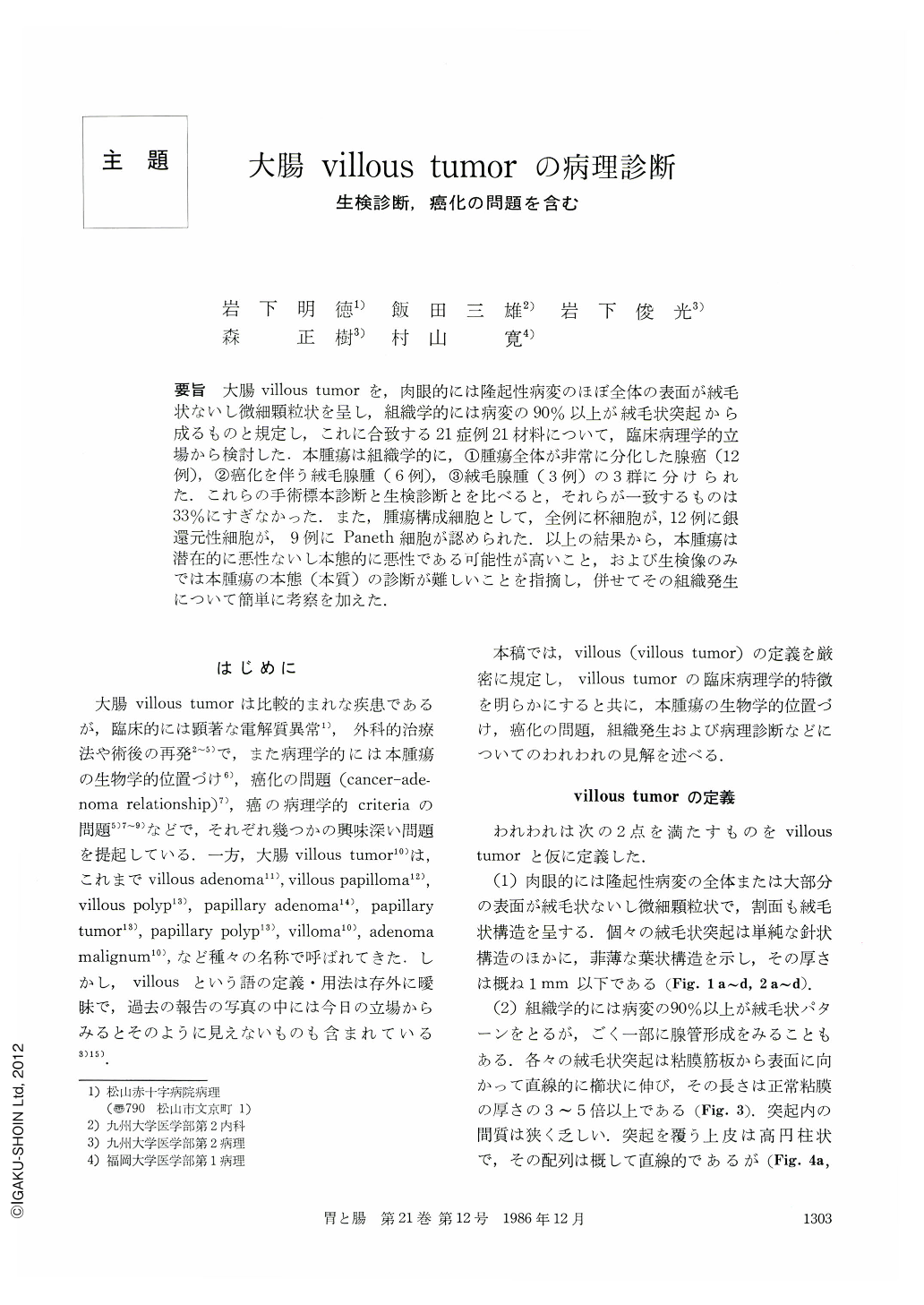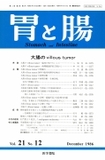Japanese
English
- 有料閲覧
- Abstract 文献概要
- 1ページ目 Look Inside
- サイト内被引用 Cited by
要旨 大腸villous tumorを,肉眼的には隆起性病変のほぼ全体の表面が絨毛状ないし微細顆粒状を呈し,組織学的には病変の90%以上が絨毛状突起から成るものと規定し,これに合致する21症例21材料について,臨床病理学的立場から検討した.本腫瘍は組織学的に,①腫瘍全体が非常に分化した腺癌(12例),②癌化を伴う絨毛腺腫(6例),③絨毛腺腫(3例)の3群に分けられた.これらの手術標本診断と生検診断とを比べると,それらが一致するものは33%にすぎなかった.また,腫瘍構成細胞として,全例に杯細胞が,12例に銀還元性細胞が,9例にPaneth細胞が認められた.以上の結果から,本腫瘍は潜在的に悪性ないし本態的に悪性である可能性が高いこと,および生検像のみでは本腫瘍の本態(本質)の診断が難しいことを指摘し,併せてその組織発生について簡単に考察を加えた.
Clinicopathological study on villous tumor of the large intestine was done in 21 resected specimens obtained from 21 patients. Villous tumor of the large intestine was defined as macroscopically an elevation with villous or fine granular surface and as microscopically a protrusion more than 90% of which is composed of villous pattern. The results obtained were as follows.
1) Villous tumors comprised 0.8% of all epithelial neoplasms of the large intestine. The average age was 63 years and the male to female ratio, three to four. The villous tumor was most frequently observed in the rectosigmoid colon (18 of 21 cases).
2) Seventeen out of 21 tumors were sessile in shape. Three had an ulceration on the surface consisting of cancer. The average largest diameter was 7.4 cm, ranging from 2.6 to 17.0 cm, and that of the tumors composed of cancer, or of those having cancer in part was 8.0 cm, which was much larger than those having no cancer with an average diameter of 3.8 cm.
3) Villous tumors studied were histologically classified into three groups as follows; twelve cases of adenocarcinoma of low grade malignancy in which the tumor was composed of extremely well differentiated adenocarcinoma, six cases with villous adenoma in which the tumor was partly composed of carcinoma, and three cases with villous tumor without cancer.
4) The component cells of the tumor were classified into either clear cell type or dark cell type, the latter being predominant in area in 16 out of 21 cases. Neoplastic goblet cells were recognized in all cases. Neoplastic argentaffin cells were seen in 12 cases and neoplastic Paneth cells in 9.
5) Histological diagnosis made on biopsy specimens was correct in only 5 out of 15 cases examined (33%).
In conclusion, it was shown that villous tumor of the large intestine is potentially or substantially malignant, and that it is difficult to make a correct histological diagnosis of the tumor on biopsy specimens. In addition, brief discussion was made on its histogenesis.

Copyright © 1986, Igaku-Shoin Ltd. All rights reserved.


